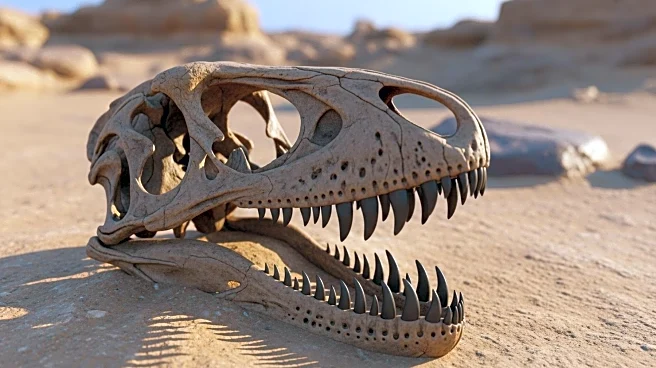What is the story about?
What's Happening?
A recent study conducted by archaeologists has uncovered that ancient hunters in South America had a preference for now-extinct megafauna during the waning years of the last Ice Age. The research, led by Luciano Prates from Mexico's National University of La Plata, involved examining animal bones at 20 archaeological sites across Argentina, Chile, and Uruguay. The findings indicate that extinct species such as giant sloths, giant armadillos, and elephant-like creatures were frequently hunted by Pleistocene humans. At 15 of the sites, the majority of butchered bones belonged to these megafauna, with 13 sites showing that over 80% of the bones were from extinct species. This suggests that these large animals were a staple in the diet of Ice Age South Americans, potentially contributing to their extinction.
Why It's Important?
The study provides significant insights into the dietary habits of ancient South American populations and their impact on megafauna extinction. Understanding the role humans played in the disappearance of these large animals can inform current conservation efforts and strategies to prevent similar patterns with modern species. The preference for megafauna highlights the importance of these animals in the ecosystem and the potential consequences of their loss. This research also contributes to the broader understanding of human migration and adaptation during the Ice Age, offering clues about how ancient societies managed resources and interacted with their environment.
What's Next?
Further research may focus on expanding the study to include more archaeological sites and regions to confirm these findings and explore the extent of human impact on megafauna extinction. Scientists might also investigate the cultural and technological aspects of hunting practices during the Ice Age, providing a more comprehensive picture of ancient human life. Additionally, these findings could lead to discussions among conservationists and policymakers about the lessons learned from past extinctions and how they can be applied to current environmental challenges.
Beyond the Headlines
The study raises ethical questions about human responsibility in the extinction of species and the long-term effects of human activity on biodiversity. It also prompts a reevaluation of the narrative surrounding human evolution and adaptation, considering the ecological consequences of human expansion and resource exploitation. The cultural significance of megafauna in ancient societies may also be explored, offering insights into the symbolic and practical roles these animals played in human history.
AI Generated Content
Do you find this article useful?















